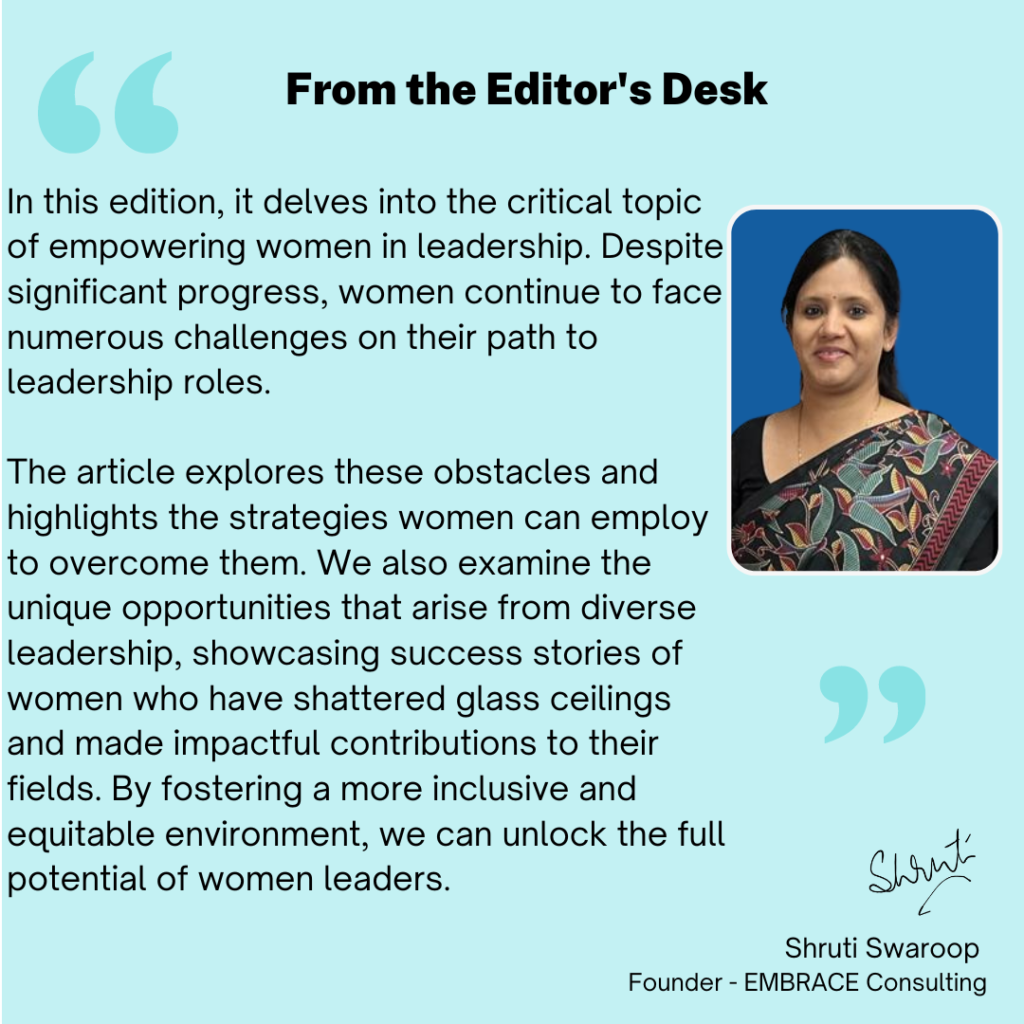
Women in leadership roles have made significant strides in recent decades, yet they still face unique challenges and opportunities. Here’s a detailed exploration of how women can overcome obstacles and capitalize on their strengths in leadership positions:
- Challenges Faced by Women in Leadership:
- Gender Bias: Women often encounter stereotypes and biases that question their leadership abilities or define their roles based on traditional gender norms.
- Glass Ceiling: There’s a persistent barrier preventing women from reaching top executive positions in many industries, despite their qualifications and capabilities.
- Work-Life Balance: Balancing professional responsibilities with personal and family obligations can be particularly challenging for women leaders.
2) Strategies to Overcome Challenges:
- Breaking Stereotypes: Women leaders can challenge stereotypes by demonstrating their competence, confidence, and decision-making skills consistently.
- Building Networks: Establishing strong professional networks and mentorship relationships can provide support, guidance, and opportunities for career advancement.
- Advocating for Change: Women leaders can advocate for policies and practices that promote gender equality and inclusivity within their organizations and industries.
- Seizing Opportunities for Leadership:
- Harnessing Unique Perspectives: Women often bring diverse perspectives and innovative approaches to leadership roles, contributing to more holistic decision-making processes.
- Developing Leadership Skills: Investing in leadership development programs and continuous learning enhances women’s capabilities and prepares them for senior positions.
- Creating Supportive Environments: Cultivating inclusive workplace cultures where diverse voices are valued fosters an environment where women can thrive and excel in leadership roles.
4) The Role of Mentorship and Support:
- Mentorship Programs: Establishing formal mentorship programs that pair women leaders with experienced mentors can provide guidance, advice, and opportunities for career development.
- Peer Support Networks: Creating networks and affinity groups where women leaders can connect, share experiences, and support one another fosters a sense of community and empowerment.
5) Looking Ahead:
- Continued Advocacy: Women leaders and their allies must continue to advocate for policies and initiatives that promote gender diversity, equity, and inclusion in leadership.
- Celebrating Progress: Recognizing and celebrating achievements and milestones in women’s leadership helps to inspire future generations and reinforce the importance of gender equality.
Empowering women in leadership involves overcoming challenges such as bias and achieving work-life balance while seizing opportunities to harness unique perspectives and skills. By advocating for change, developing leadership capabilities, and creating supportive environments, women can thrive and make significant contributions as leaders in their organizations and beyond.
Breaking Barriers: Empowering Women in Leadership Positions
Divya Chopra | 4th April 2024
Many organizations are committed to achieving diversity, equity, and inclusion (DEI) in their workforce, with a focus on increasing female representation. Studies show that women leaders enhance productivity and contribute unique perspectives and insights. Research indicates that groups with more women demonstrate higher collective intelligence in problem-solving compared to all-male groups.
Empowering women leaders for gender Equality in the Digital Economy
UNCTAD | 7th May 2024
UN Trade and Development (UNCTAD) has introduced four new advocates to enhance efforts for a gender-inclusive digital space. Six women advocates in the 2024-2025 cohort will help shape policies promoting gender equality in the digital economy. Emphasizing women’s digital entrepreneurship is crucial for inclusive development, especially in developing economies.










